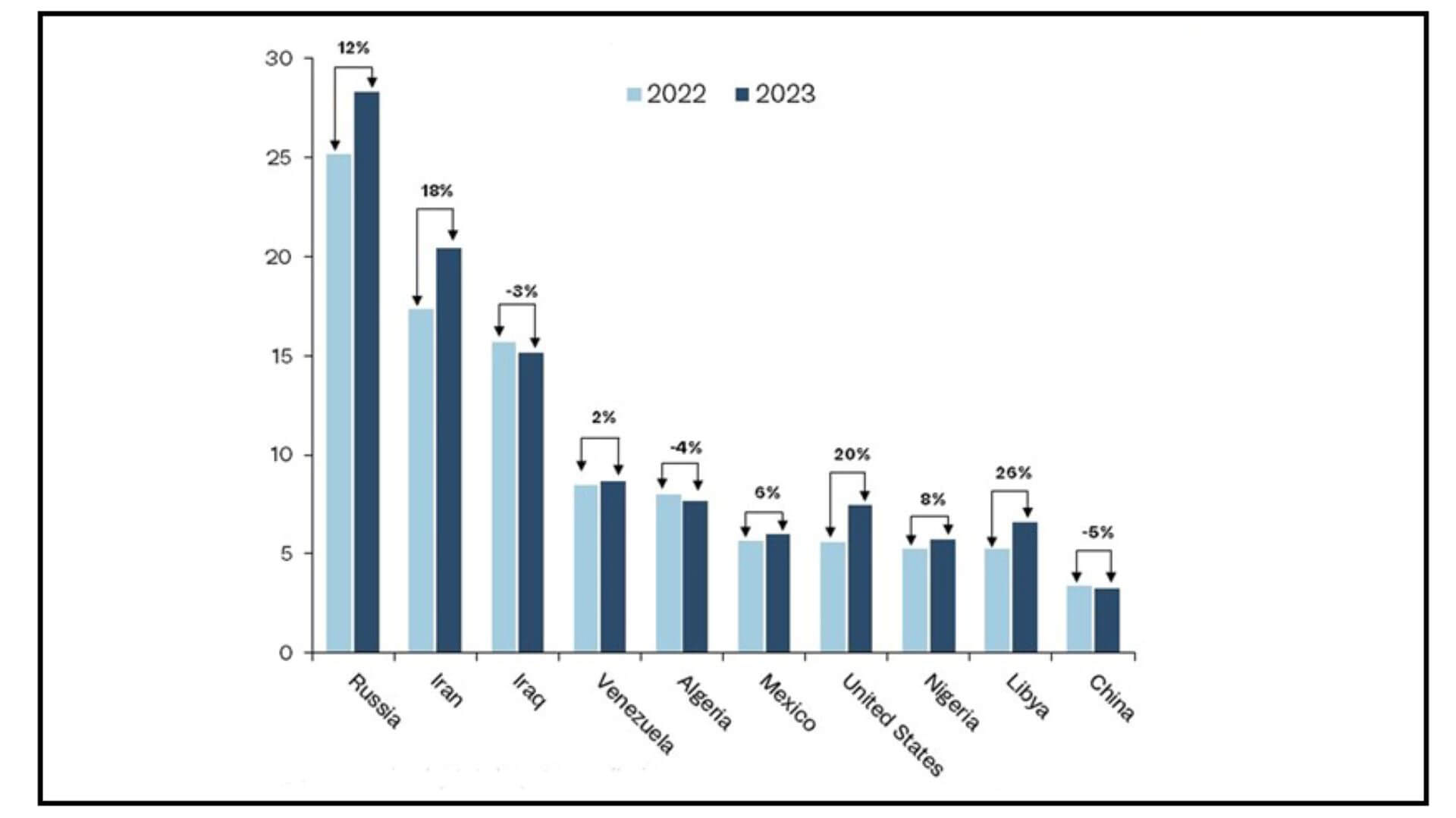UPDATED 1 Sept: The EI library in London is temporarily closed to the public, as a precautionary measure in light of the ongoing COVID-19 situation. The Knowledge Service will still be answering email queries via email , or via live chats during working hours (09:15-17:00 GMT). Our e-library is always open for members here: eLibrary , for full-text access to over 200 e-books and millions of articles. Thank you for your patience.
New Energy World™
New Energy World™ embraces the whole energy industry as it connects and converges to address the decarbonisation challenge. It covers progress being made across the industry, from the dynamics under way to reduce emissions in oil and gas, through improvements to the efficiency of energy conversion and use, to cutting-edge initiatives in renewable and low-carbon technologies.
Flaring emissions on the rise, reversing a positive trend, according to new analysis
23/10/2024
News
Flaring emissions from global upstream oil and gas production activity increased by 7% from 2022 to 2023, reversing earlier progress made in cutting such emissions, according the latest analysis by Rystad Energy. It reports that upstream activities emit about 1 Gt/y of CO2 in total. Flaring contributed around 30% of those emissions in 2023, assuming 98% flaring efficiency on average.
Flaring – the process of burning off excess natural gas during oil extraction – has been a longstanding concern for environmentalists and policymakers. Although non-routine flaring is often essential for safety or operational reasons, limiting routine flaring is considered a low-hanging fruit for oil and gas companies trying to cut their carbon footprint. However, this recent uptick underscores the challenges facing the industry, particularly in key producing countries such as Russia, Iran and Iraq, says Rystad Energy.
‘The unexpected reversal of most of these gains in 2023 represents a step in the wrong direction from a climate perspective. This underscores the importance of continuous and increased efforts from companies, countries and industry organisations to set targets and implement measures to tackle routine flaring – also in countries with less focus on emission reduction initiatives and decarbonisation,’ comments Magnus Kjemphol Lohne, Senior Vice President, Energy Systems Research.
The analysis used satellite data in combination with global inventory overviews to assess flaring practices globally. It reveals that the Middle East, Africa and Russia collectively made up about 70% of total flaring volumes in 2023. The Middle East, in particular, saw a sharp increase in its flaring levels, reaching approximately 45bn m3 – a 7% rise from the previous year.
Meanwhile, Russia continues to dominate on a country level, with around 28bn m3 flared in 2023 – up 12% from 2022. Other countries with the highest absolute increases were Iran, the US and Libya, all of which had greater than 10% increases. Rystad notes that the significant uptick in the US ‘can be attributed to challenges related to midstream gas takeaway capacity, especially in the Permian Basin’.

Fig 1: Top 10 countries by total upstream flaring volumes, 2023, in bn m3
Source: Rystad Energy
Note: Flaring volumes are based on Rystad Energy’s proprietary emissions methodology combining VIIRS Nightfire satellite data produced by the Earth Observation Group, Payne Institute for Public Policy, Colorado School of Mines; reported data; and field-level estimations, October 2024
Flaring intensity, measured as kg CO2/boe, shows emissions relative to production volumes and provides insights into how effectively regions and countries are managing their flaring practices. The US and China, despite being among the top 10 largest emitters in absolute terms, have flaring intensities of less than 3 kg CO2/boe, significantly below the global average of 5 kg CO2/boe. Conversely, Venezuela has one of the highest flaring intensities, emitting almost 40 kg CO2/boe.
The global upstream oil and gas industry has flared about 140bn m3 of gas annually in the last decade, according to Rystad Energy, resulting in ‘a substantial waste of valuable resources and contributing significantly to greenhouse gas emissions in the upstream oil and gas industry’. Although many countries and producers have made significant strides in reducing routine flaring activity, the recent data reveals that several regions are lagging behind. ‘Despite general progress in prior years, the recent increase in flaring volumes and emissions is a stark reminder that global alignment on climate objectives is paramount,’ it concludes.
